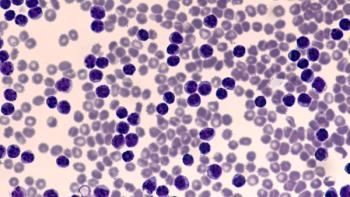
Subcutaneous Dose of Infliximab Biosimilar Superior to IV Dose in Treating IBD
Study shows that high infliximab trough levels linked to a low risk of relapse after switching to subcutaneous infliximab in patients with inflammatory bowel disease.
A new study shows that a subcutaneous (SC) form of infliximab, CT-P13, provides improved benefits in treating inflammatory bowel disease (IBD) compared with intravenous (IV) dosing, according to a press release from Celltrion Healthcare.
Remsima, an infliximab biosimilar, was the first monoclonal antibody biosimilar approved by the European Commission and is currently approved for 8 autoimmune diseases, including IBD and rheumatoid arthritis. In April 2016, the FDA approved CT-P13 under the trade name Inflectra.
The study, presented at the European Crohn’s and Colitis Organization virtual congress 2022, also found that maintenance therapy with Remsima SC yielded stable drug levels throughout a 14-day treatment cycle in a remitted patient with Crohn disease (CD). This means that drug monitoring may be conducted at any point between the 2 injections, which improves convenience for patients, according to the researchers.
The IV dose of infliximab must be administered as an infusion over 2 hours with patients monitored for 1 to 2 hours after treatment. The SC dose can be given in a pre-filled pen, pre-filled syringe, or pre-filled syringe with needle safeguard. The European Union has granted marketing authorization for a 120 mg fixed dose of SC infliximab for adults, regardless of body weight.
For the REMSWITCH study, 130 patients in remission (73% with CD and 26.9% with ulcerative colitis [UC]) switched from 3 different IV dose regimens to SC infliximab at 120 mg every 2 weeks.
After the switch, the study showed that average Infliximab trough levels were significantly higher (9.8 [6.4] µg/ml vs 14.4 [5.7] µg/ml; P<.0001), with levels rising in patients who underwent 5 mg/kg/8weeks or 10 mg/kg/8weeks IV regimen. Levels remained stable in those who were treated with 10 mg/kg/6weeks or 10 mg/kg/4weeks of IV Remsima.
The study also found that infliximab trough levels were stable (variation V1-V0 (Visit 0 = V0) < [1]) in 4.3%, 15.0 %, 33.3 % and 50.0 % of the patients switched from the following IV doses respectively: 5 mg/kg/8 weeks, 10mg/kg/8weeks, 10 mg/kg/6 weeks and 10 mg/kg/4 weeks (P = .003).
Clinical relapse after switching, which can cause therapeutic escalation, was found in 11.1% of patients and dose increase (240 mg/2 weeks) produced clinical remission in 93.3% of relapsed patients. The risk of relapse was higher in patients with stable or reduced trough levels following the switch versus those with increased trough levels (31.8% vs 7.1%; P = .024)
Patients reported greater acceptability of the SC injection compared with IV infusions. Further research from the RDTM study analyzed intra-individual variations of the drug levels at different time points across 2 consecutive cycles of maintenance therapy.
“This is the first real-world study analyzing serum levels of infliximab at different time-points between 2 SC injections of infliximab and during 2 cycles at steady state during maintenance regimen in remitted CD patient,” said Xavier Roblin, MD, of the department of gastroenterology at the University Hospital of Saint-Etienne in France, in a press release. “Our results clearly demonstrated stable levels of infliximab all over this period.”
Reference
High Infliximab Trough Levels Are Associated With Low Risk of Relapse When Switching to Subcutaneous Infliximab in Patients With Inflammatory Bowel Disease, Suggests New Data Presented at ECCO 2022 Virtual Congress. News release. Accessed February 22, 2022.
Newsletter
Stay informed on drug updates, treatment guidelines, and pharmacy practice trends—subscribe to Pharmacy Times for weekly clinical insights.




















































































































































































































